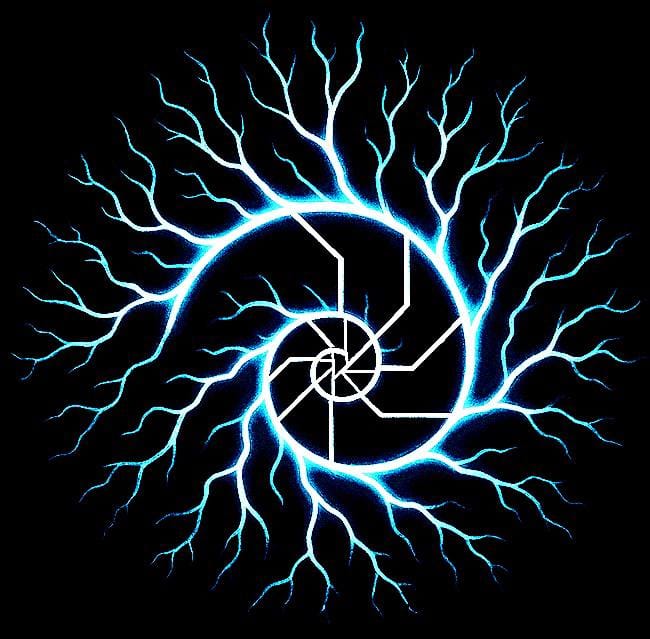Collapse as Compost, Not Catastrophe: Lessons from 1177 B.C. for Right Now

This essay draws on lived experience and burnout recovery, plus a systems-design lens. The aim is clarity, compassion, and practical resilience.
TL;DR
- Collapse is rarely a single dramatic event. It's a slow release in systems that have become brittle.
- The Late Bronze Age didn't just end. It composted into new forms of society.
- We see the same rhythm in bodies and modern networks: expand –> saturate –> collapse –> reconfigure.
- Build buffers, reduce tight coupling, and ritualize release to turn collapse into compost instead of catastrophe.
A Hook, Not and Alarm Bell
"Collapse" usually conjures smoke and sirens. But most collapses are quiet at first: a pause in a supply line, a missed signal, a story we tell ourselves that no longer fits but continues anyway. From a little distance, what looks like an ending reads as a system changing the way it holds together.
This is the deeper insight in Eric Cline's 1177 B.C.: The Year Civilization Collapsed. Despite the title, the Late Bronze Age did not vanish overnight. It decomposed, and out of that decomposition came new forms of life and order. Collapse, seen clearly, is transformation through letting go.
Collapse is a release when a system forgets how to exhale.
The Bronze Age Network: Glitter and Stress
- A tightly connected world: Pharaohs traded with kings. Copper flowed from Cyprus. Letters called rulers "brother." Status traveled the same routes as tin and grain.
- Fragility behind the shine: The more tightly coupled the network, the more one shock ricocheted into many. Droughts, earthquakes, raids, and interruptions to trade stacked and synchronized.
- The missed release: Instead of schedule pauses, fallow years, jubilees, debt releases, leaders doubled down on monuments and myths of endless control.
- The tear looked sudden, but the fabric had been thinning for decades.
Resilience theory describes this pattern precisely: systems absorb disturbance until thresholds are crossed, after which they reorganize into a new regime.
A Pattern That Scales From Empire to Cell
Think of a four-beat rhythm.
1) Expansion: Growth, linking, ambition.
2) Saturation: Buffers thin. Everything is "always on."
3) Collapse: The system drops the pattern it was maintaining.
4) Reconfiguration: Space opens for a new pattern to emerge.
The rhythm is ecological and personal. When we build in release, we bend and renew. When we forbid release, we grow brittle and break.
A Body-Level Lens
Anyone who has burned out knows this rhythm.
- Expansion: Long shifts, service, output.
- Saturation: Stress on stress, shallow sleep, the heaviness of the luteal phase.
- Collapse: The body finally says no.
- Reconfiguration: Rest, emptiness, and then a practice that fits reality.
The menstrual cycle is a built-in teacher: ovulation expands, luteal saturates, menstruation releases, follicular renews. Ignore release and the whole organism tightens. Honor release and flow returns.
Release is a feature, not a failure. Systems that can pause don’t shatter. They bend and renew.
Our Moment Rhymes With Theirs
Today’s world is a tightly coupled mesh of food, energy, finance, and information. Shocks travel far and fast.
- One drought can nudge global prices.
- One port closure can ripple into inflation and unrest.
- One cyberattack can cascade into physical disruptions.
Macroeconomic analysis now treats supply-chain fragility as a first-order risk, not a footnote. Our stabilizing myths can harden into traps too: identities without flexibility, rules that perform control instead of creating space for renewal, growth narratives with no off‑ramp.
Compost or Combust: Two Futures
Here’s the hopeful part: green shoots are already visible.
- Polycentric governance spreads decision-making across many centers, reducing single points of failure.
- Local resilience in energy, water, and food reduces chain reactions.
- Decentralized and modular systems make more small bets and fewer brittle commitments.
Release rituals turn collapse into compost:
- In agriculture: Fallow fields, crop rotations, prescribed burns.
- In finance: Jubilees, write-downs, clean deprecations.
- In teams: Sabbaticals, slack capacity, project sunsets that make room for the next thing.
- In personal life: Boundaried rest, grief rituals, digital sabbaths, and explicit endings supported by community.
Field Notes for Practical Resilience
Below are design moves that show up across ecology, engineering, and organizational practice. Each is a way of “remembering how to exhale.”
- Design buffers
- Time, inventory, savings, and emotional margin. Buffers are not waste; they are preparedness.
- Treat buffer-building as a standing line item, not leftover luck.
- Reduce tight coupling
- Map critical dependencies. Where one failure cascades, add separation, redundancy, or a manual fallback.
- Favor modular architectures: smaller components that can fail safely.
- Shorten feedback loops
- Instrument early signals. Catch stress while it’s reversible. In systems science, long lag times are a known risk for tipping events.
- In teams, run short retros and safe-to-fail probes.
- Normalize endings
- Sunsets, deprecations, renegotiations. Ending is how capacity returns.
- Write “kill criteria” before starting new work.
- Make rest structural
- Put rest on the calendar and in the budget. Willpower is not a reliable control system.
- Protect capacity with hard edges: quiet hours, rotate on-call, true vacations.
Plain-Language Definitions
- Collapse: A system ceasing the pattern it was maintaining. Often gradual, sometimes punctuated.
- Brittleness: Strength without flexibility. Looks solid. Breaks suddenly.
- Compost: The nutrient-rich remains of a finished pattern.
The question isn’t “Will collapse come?” but “Will we cling until it shatters, or guide regenerative reconfiguration?” History, ecology, and the body whisper the same answer: compost, or combust.
References
- Cline, E. H. 1177 B.C.: The Year Civilization Collapsed (Revised and Updated), Princeton University Press.[25]
- The Amarna Letters, Penn Museum overview and archive.[26]
- Drake, B. L. et al. Hydroclimate variability and the Late Bronze Age collapse, Nature Communications (2023).[27]
- Middleton, G. D. Collapse of Bronze Age Civilizations, Oxford Research Encyclopedia (2018).[28]
- Bachhuber, C. & Roberts, R. (eds.). The Sea Peoples Up-to-Date, Austrian Academy of Sciences (2016).[29]
- Holling, C. S. Resilience and stability of ecological systems, Annual Review of Ecology and Systematics (1973).[30]
- ACOG. Your Menstrual Cycle, patient education resource.[31]
- IMF. World Economic Outlook (2024), supply chain fragility context.[32]
- FAO. The impact of disasters and crises on agriculture and food security (2021).[33]
- OECD. Resilience for Global Value Chains.[34]
- CISA. The Increasing Threat of Ransomware (2023).[35]
- Daly, H. Steady-State Economics and critiques of growth lock-in, Ecological Economics.[36]
- Ostrom, E. Governing the Commons, Cambridge University Press.[37]
- Chapman, A. et al. Localized resilience in energy systems, Nature Sustainability (2021).[38]
- Levin, S. et al. Complexity and robustness in networks, PNAS (2009).[39]
- North, M. et al. Prescribed fire science and practice, USDA Forest Service (2020).[40]
- BIS. Dealing with debt overhang, BIS Quarterly Review (2018).[41]
- HBR. It’s Time to Free Up Your Team’s Time (2022).[42]
- APA. Stress effects on health.[43]
- HBR. Buffers Against Uncertainty (2016).[44]
- Perrow, C. Normal Accidents and tight coupling, American Sociological Review.[45]
- Scheffer, M. Early-warning signals for critical transitions, Scientific Reports (2016).[46]
- MIT SMR. The Art of Ending Projects (2023).[47]
- Walker, M. The role of sleep in learning and health, review article.[48]

Comments ()